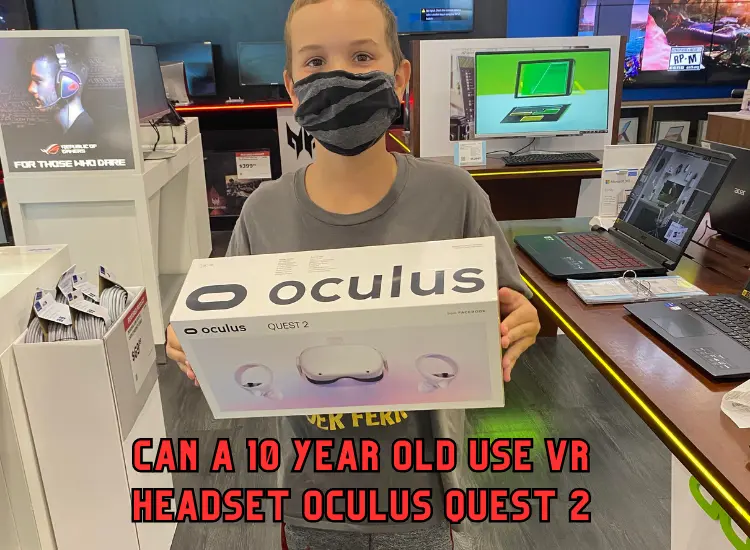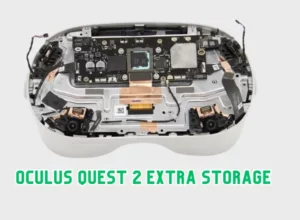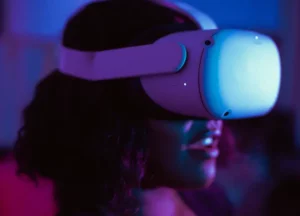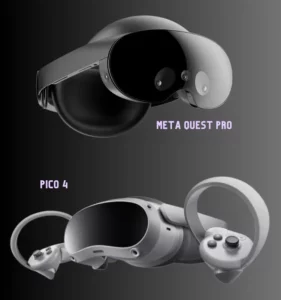VR is highly addictive and stimulates the senses, which is why it is necessary to consider age appropriateness when allowing a young person to use a VR headset.
The Meta Quest 2 has an official minimum age of 13, though some parents may feel comfortable letting their 9 or 10-year-old use the device with parental supervision.
In the end, it would depend on the maturity level and level of responsibility of each individual child.
The Oculus Quest 2 also has parental controls that can be used to restrict access to age-inappropriate content.
Safety note: It is also important to limit the amount of time spent using the Quest 2 and take breaks as necessary to avoid eye strain, headaches, and dizziness.
Let’s go for the details –
Meta VR Headsets Only For 13+ Kids
Meta heavily considered the age of their intended users when creating the Quest VR Headsets.
The device is only suitable for ages 13 and older, as younger children may find some of the games too intense or difficult to operate.
As per Meta, “Younger children have greater risks of injury and adverse effects than older users.”
In these circumstances, they do not allow anyone under the age of 13 to create an Oculus account or use the Meta VR system.
Also, they have suggested monitoring the time their teens spend using the headset. It is important that your teen follows all safety warnings and takes breaks while using the device.
Why you should not let your 10-year-old use VR headsets?
In recent years, the circumstances of virtual reality (VR) technology have changed rapidly, and 10-year-olds have more potential applications than ever before.
It’s no secret that virtual reality is sweeping the entire world, and it’s no different for modern children.
However, parents should use caution when allowing their 10-year-old children to use VR headsets.
The threat of motion sickness and dizziness that can accompany VR headset use is not the only danger associated with prolonged exposure to virtual reality.
Studies have shown that extended VR headset use can cause feelings of disorientation, discomfort, and nausea in users.
Furthermore, there is no way of assuring that children using VR headsets will not be able to access all content intended for adults due to a lack of oversight and regulation.
This could expose your child to inappropriate content or induce anxiety due to the immersive nature of the experience.
VR technology is still evolving and research into longer-term effects on mental health is ongoing.
It’s best to steer your 9 or 10-year-old kids clear of VR headsets until more is known about the potential risks associated with prolonged use.
Compared to older or 13+ teens, 10-year-olds have not fully developed their cognitive abilities and emotional regulation, making it important for parents to closely monitor and limit their exposure to VR headsets if they had already started using the device.
How To Use VR Headset In the Best Way For Kids?
We all know the rules and regulations when it comes to using a VR headset for kids 9 or 10 years old, but on the other side of the coin let us talk about the benefits it can have for your kids when used in a safe and reasonable manner.
Here are some tips on how to make sure you use VR headsets in the best way for your kids:
1. Start Small – As always, start from baby steps. The best way to help your kids build their knowledge is to introduce them to simple games, such as drawing or puzzles, that require no movements or reactions. Once they are comfortable with these games, they can gradually move on to more complex frolics.
2. Monitor Their Usage – Take a break if they seem to be getting too immersed in the game to regulate their exposure and avoid motion sickness.
3. Educate Yourself – By understanding how virtual reality works and how it can benefit your child’s development, you’ll be able to use the headset in ways that will be most beneficial to him/her.






